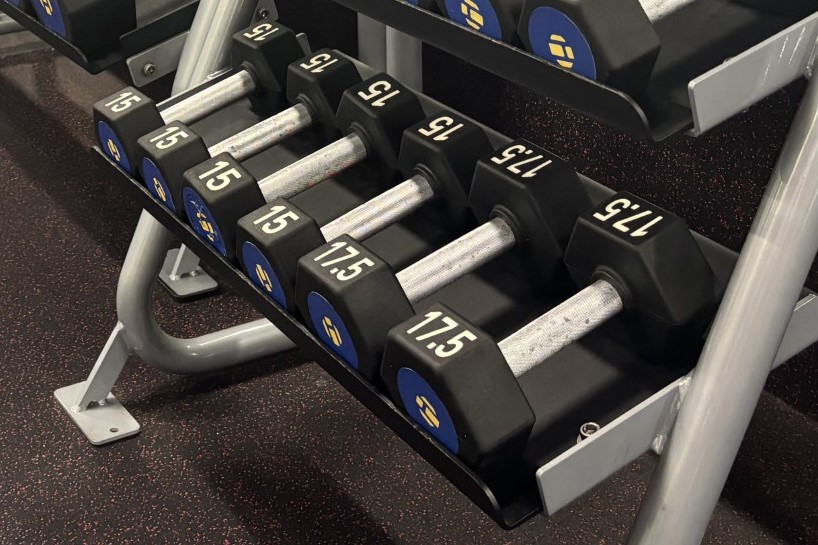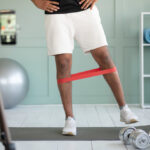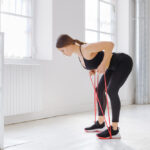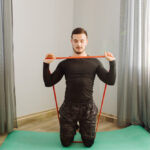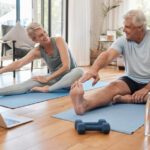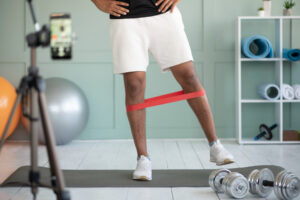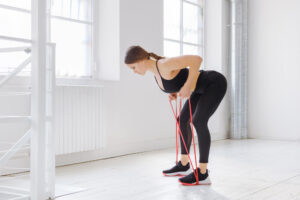When it comes to building a well-rounded fitness routine, forearm strength is often overlooked, but it’s crucial for overall functionality. Strong forearms contribute to improved grip strength, which plays a key role in everything from lifting weights to opening jars. In fact, your forearm muscles are involved in almost every activity that requires hand or wrist movement. Whether you’re an athlete, a gym enthusiast, or just someone trying to enhance daily functionality, strengthening your forearms should be a priority.
This post will dive deep into some of the best dumbbell exercises that effectively target all areas of the forearm. These exercises will help you build both strength and endurance, ensuring that your forearms not only look defined but also perform better in your daily activities.
Best dumbbell forearm exercises
Let’s get into the top dumbbell forearm exercises that will give you a balanced workout.
1. Dumbbell wrist curl (Palms-up)
If you’re looking to target the flexor muscles in your forearms, the dumbbell wrist curl is the perfect exercise. These muscles are responsible for bending your wrists and fingers, and they are often underdeveloped in those who don’t focus on forearm-specific movements.
How to perform a proper dumbbell wrist curl:
- Sit on a bench or chair with your feet flat on the floor. Hold a dumbbell in each hand, with your forearms resting on your thighs, palms facing upward.
- Allow your wrists to hang off the edge of your thighs.
- Slowly curl the dumbbells up by flexing your wrists, ensuring that your forearms remain stable against your legs.
- Hold at the top for a second before slowly lowering the dumbbells back to the starting position.
Pro tip: Focus on controlled, slow movements to fully engage the flexor muscles. Avoid using momentum or jerking your wrists, as this could lead to injury. This exercise is simple but highly effective when performed correctly. Stick to a moderate weight; your goal here is precision, not power.
2. Dumbbell reverse wrist curl (Palms-down)
To balance out your forearm development, you need to focus on the extensor muscles, located on the outer side of the forearm. The reverse wrist curl is a fantastic exercise for this purpose.
Steps for performing the reverse wrist curl:
- Again, sit on a bench with your forearms resting on your thighs, but this time, hold the dumbbells with your palms facing downward.
- Let your wrists hang off the edge of your thighs.
- Slowly extend your wrists upward, lifting the dumbbells with your forearm muscles.
- Pause at the top before lowering the dumbbells back down to the starting position.
Key points: The reverse wrist curl is often more challenging than the palms-up variation due to the weaker nature of the extensor muscles. Be cautious not to let your elbows flare out during this exercise. Keep them tucked close to your body to ensure proper alignment and to avoid shifting the work to your upper arms.
3. Dumbbell hammer curl
The dumbbell hammer curl is an essential exercise for both forearm and biceps development. It specifically targets the brachioradialis, a muscle that plays a significant role in forearm strength and endurance.
How to do it:
- Stand tall with a dumbbell in each hand, arms by your sides, palms facing each other in a neutral grip (thumbs facing forward).
- Curl the dumbbells up toward your shoulders without rotating your wrists.
- Once the dumbbells reach your shoulders, slowly lower them back to the starting position.
Why it’s effective: The neutral grip of the hammer curl keeps more tension on the forearms than a traditional bicep curl. It works not only the brachioradialis but also engages the muscles in the forearm that assist with wrist stability. For maximum results, keep your elbows close to your torso and avoid leaning back as you lift.
4. Zottman curl
The Zottman curl is a powerful hybrid exercise that works both the biceps and forearms in one smooth movement. It combines the benefits of a traditional bicep curl with a reverse wrist curl, making it highly efficient for balanced arm strength.
Steps to perform a Zottman curl:
- Stand with a dumbbell in each hand, palms facing upward (supinated grip).
- Curl the dumbbells as you would in a normal bicep curl until they reach shoulder height.
- At the top of the movement, rotate your wrists so that your palms face downward (pronated grip).
- Lower the dumbbells slowly with this new grip, working the forearm extensors on the descent.
Why it’s a game-changer: This rotation activates both the flexor and extensor muscles, giving your forearms a comprehensive workout. It also helps improve wrist strength and control, essential for grip-intensive activities.
5. Farmer’s walk
The farmer’s walk may look simple, but it’s a powerhouse of an exercise for building grip strength and forearm endurance. By holding heavy dumbbells and walking a set distance, you’re engaging your forearms, core, and posture muscles all at once.
How to do a farmer’s walk:
- Stand with a heavy dumbbell in each hand, arms fully extended by your sides, with a firm grip on the weights.
- Walk forward for a set distance or time, maintaining a tall posture with your shoulders back and core engaged.
- Focus on keeping a steady pace and not allowing the dumbbells to swing or your shoulders to hunch forward.
Pro tip: Start with a manageable weight and short distances, like 20-30 meters, and gradually increase as your grip strength improves. This functional movement translates well into real-world activities, where strong, durable forearms are a huge asset.
Final thoughts
Developing strong forearms is key to improving grip strength, injury prevention, and enhancing your overall workout performance. By incorporating these dumbbell exercises into your routine, you’ll be well on your way to building balanced and functional forearm strength. For more fitness tips and tricks, check out our other blog posts.

